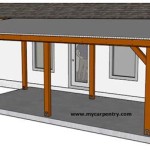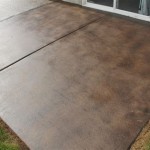Essential Aspects of Natural Stone Patio Material Costs
Transforming your outdoor space into an inviting paradise with a natural stone patio enhances aesthetic appeal, functionality, and property value. But understanding the cost implications is crucial before embarking on this project. Here's a detailed exploration of the factors that influence the material costs of natural stone patios:
Stone Type
The type of natural stone you choose significantly impacts material costs. Each stone has unique characteristics, durability, and rarity, affecting its price. Here are some popular options:
- Flagstone: Irregular, layered stone with a charming rustic appearance. Costs range from $5-$15 per square foot.
- Limestone: Smooth, durable stone available in various neutral colors. Prices typically fall between $8-$20 per square foot.
- Travertine: Porous stone with a beige or cream hue. Expect to pay $10-$25 per square foot.
- Granite: Extremely hard and resistant to wear. Costs range from $12-$30 per square foot.
Size and Thickness
The size and thickness of the stone tiles influence the material cost. Larger tiles are more expensive due to higher quarrying and cutting expenses. Similarly, thicker tiles provide greater durability but come at a higher cost.
Finish
The surface finish of the stone affects its appearance and material cost. Common finishes include:
- Natural Cleft: Rough and irregular, offering a natural look. Costs are typically lower.
- Honed: Smooth and matte, showcasing the stone's natural color. Priced higher than natural cleft.
- Tumbled: Rounded edges and a slightly distressed appearance. Similar in cost to honed.
- Polished: Smooth and shiny, enhancing the stone's color and reflectivity. The most expensive finish.
Installation Method
The method of installation also influences material costs. Dry-laid patios require less labor and materials than mortared patios, making them more economical. However, mortared patios offer greater stability and durability in high-traffic areas.
Shipping and Handling
Shipping and handling costs vary depending on the distance from the quarry and the stone's weight. Heavier stones require specialized transportation equipment, resulting in higher expenses.
Additional Considerations
Besides the material costs, consider the following additional expenses:
- Base Materials: Gravel, sand, and other base materials are necessary for proper drainage and support.
- Edging: Perimeter edging materials, such as pavers or bricks, define the patio's borders.
- Labor: Professional installation is recommended for proper execution and longevity.
Conclusion
Understanding the factors that influence the material costs of natural stone patios is essential for informed decision-making. By considering stone type, size, finish, installation method, shipping, and additional expenses, homeowners can accurately estimate the cost of their patio project. This knowledge empowers them to create a stunning outdoor space that aligns with their budget and aesthetic preferences.

Patio Materials Their Costs Tilly Design

How Much Does A Stone Patio Cost 2024 S

How Much Does A Stone Patio Cost 2024 S

Flagstone Patios How To Guide Paving Cost Diy Vs Contractor Install Mutualmaterials Com

2024 Bluestone Patio Cost S Per Square Foot

2024 Bluestone Patio Cost S Per Square Foot

Flagstone Patios How To Guide Paving Cost Diy Vs Contractor Install Mutualmaterials Com

Is Flagstone Er Than Pavers See Its Pros And Cons

Flagstone Patio Ideas Cost How To Install Landscaping Network

How Much Does A Flagstone Patio Cost 2024 S
Related Posts








